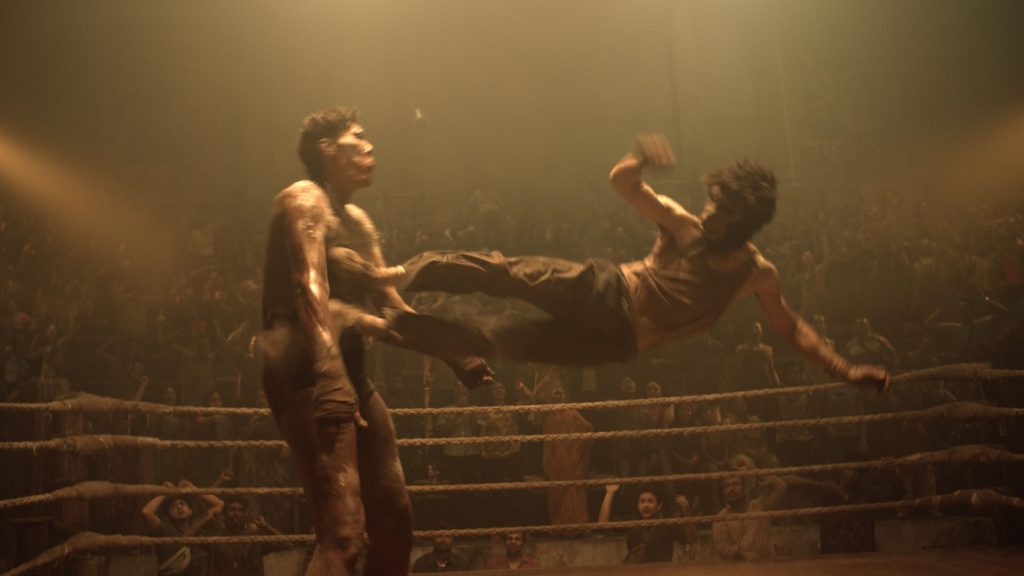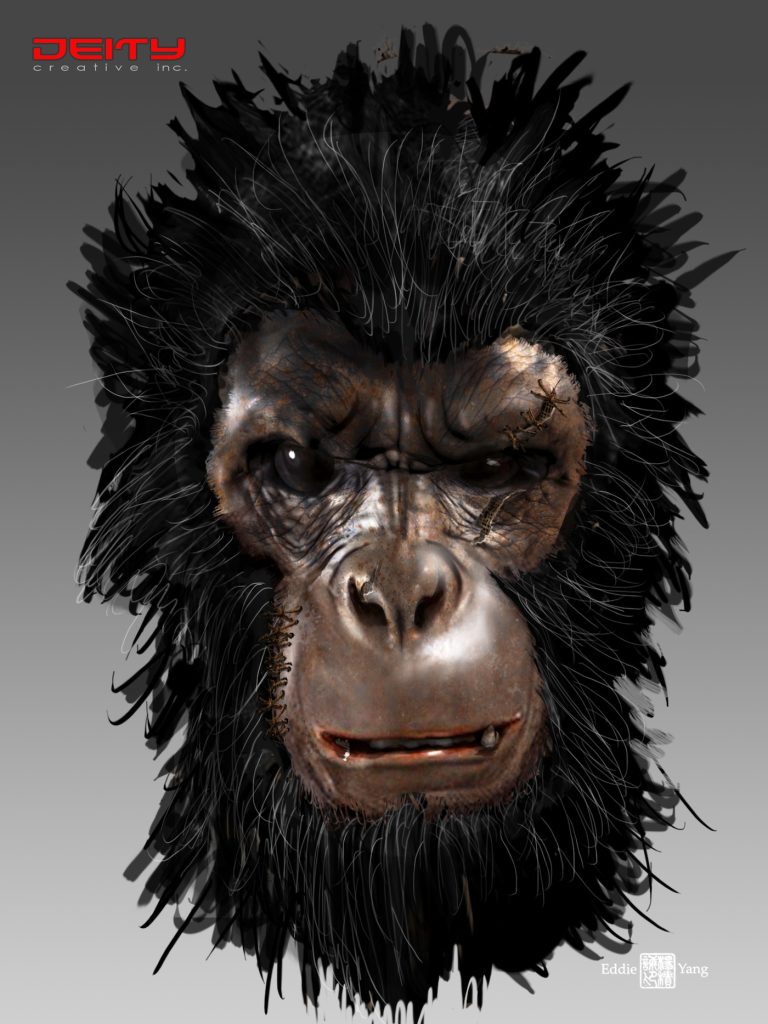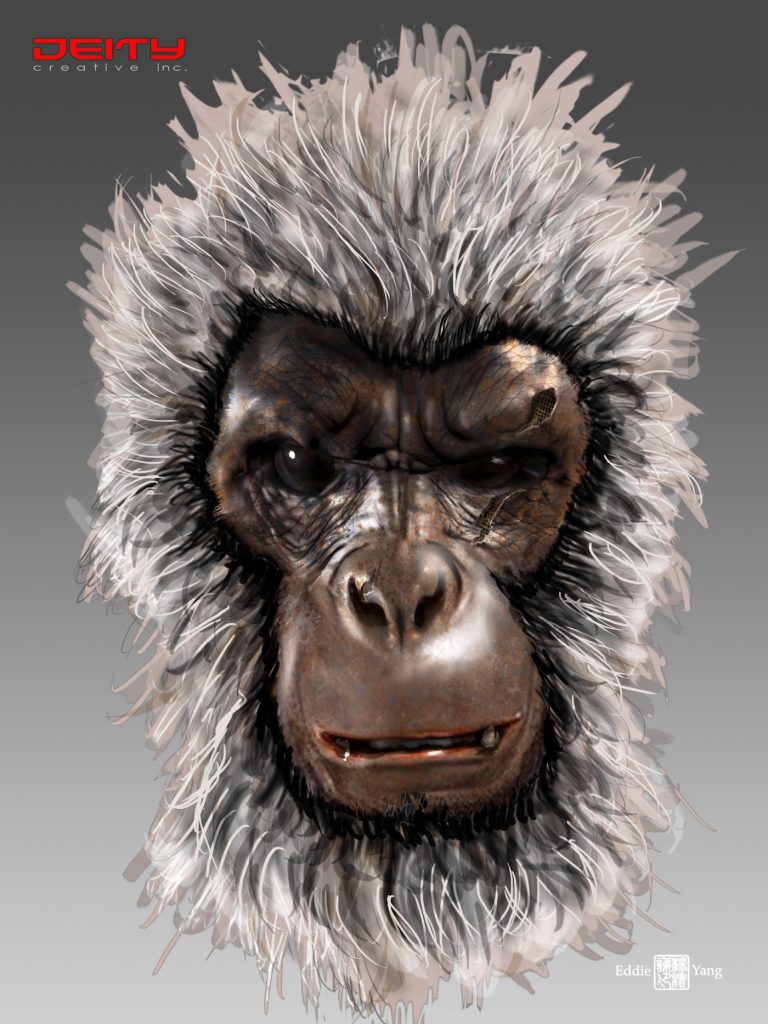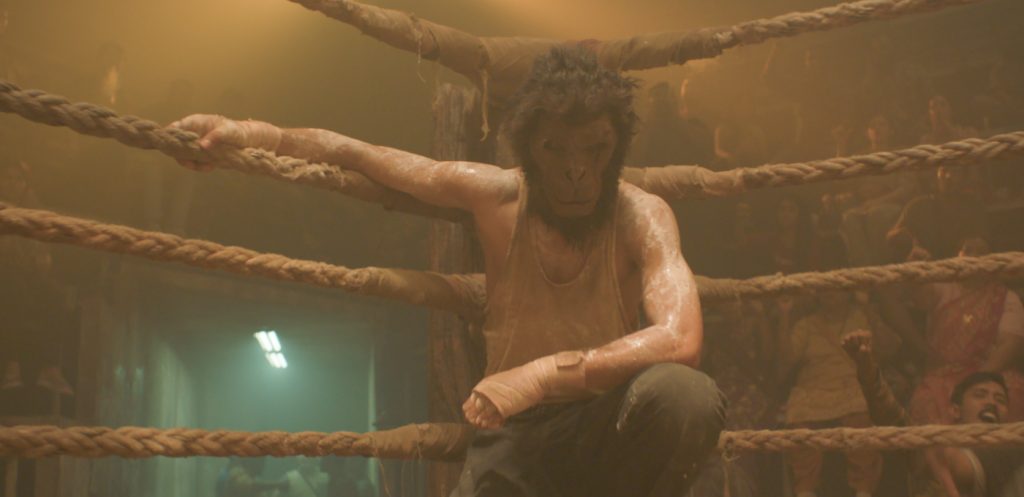“Monkey Man” Mask Designer Eddie Yang Gives Dev Patel a Primal Facelift
Dev Patel’s directorial debut, Monkey Man, is a kinetic, deeply felt revenge story set in Mumbai, a world that is rarely depicted with such punishing, propulsive energy and passion. Patel stars as the Kid, an anonymous young man nursing a wound so deep it becomes a source of inexhaustible rage and, ultimately, power. The Kid’s mother was murdered by the ruthless, heartless leaders who prey on the poor and powerless in Mumbai, but the Kid aims to change the power structure with a primal audacity inspired by the story of Hanuman, the Hindu monkey god. The Kid dons a mask and begins his bone-crunching revenge journey on Mumbai’s vampiric power players by learning how to brawl and absorb pain in an underground fight club. The hunt is on.
Of all the talented people Patel assembled to help him pull off his critically acclaimed debut, mask designer Eddie Yang was a crucial asset. Yang began his career as a designer and builder of masks, specialty costumes, creatures, and props, working for the legendary special makeup effects designer Rick Baker, a seven-time Oscar winner, helping Baker on Men in Black, Tim Burton’s Planet of the Apes, and more. Yang’s work on specialty suits and characters has been seen in a slew of iconic films, including Iron Man, Avatar, War of the Worlds, and The Dark Knight Rises.
In Monkey Man, Yang’s charge was straightforward but also the very heart of the film—help design the monkey masks that the Kid will wear on his bloody, bruising path toward vengeance. Here, Yang helps break down his process, his happy shock at seeing the finished film, and what it is about a mask that remains endlessly compelling, even in a world of seamless computer generated effects.
Monkey Man seems like a fairly straightforward job for you, considering all the things you’ve designed over the years, yet it seems safe to say the monkey masks are as important to Dev Patel’s vision here as anything you’ve worked on before.
For a film like Monkey Man, it was a little bit more obvious [than previous films] what the work was going to be. We knew it was going to be a monkey mask, but still, monkeys can come in so many varieties, right? There are apes that can be completely black-skinned, there are chimps that are more flesh-toned, and so on. So you want to know what the director’s vision is, and for this film, Dev was very decisive when it came to trying out variations and steered us in the direction of what we actually see in the film. Because it was going to be shot in India, I knew it would have a lot of cultural influences. I even tried a few masks that were very interesting, more like a blue-painted face, and versions that were more exotic. But Dev didn’t want that. He wanted a straightforward kind of monkey, the chimp faces that we ended up with.

Can you walk me through your design process here?
It began typically like almost any other film that I’ve worked on. You talk to the director, and usually, we’re sent a script. I was not sent a script on this one. This was like four years ago, and Dev showed me a reference of a gorilla mask that was available for purchase, like a Halloween mask. It was a lower quality, which I totally got because Dev’s character in the film probably couldn’t afford an expensive mask. So the question was, does he make the mask? Does he find it? So we had all these conversations just to make sure that the final masks would resemble what his character would have. Using that as one of the parameters and saying, Okay, this is the low-end quality mask, you know you don’t want something ultra-realistic. Obviously, you don’t want the audience to think that it’s a prosthetic or it’s an actual human-like ape, like Planet of the Apes or something. So it was about finding the right aesthetic between how realistic versus how cheap and basic looking we wanted it to be, and we found that happy medium.
You were an early proponent of deploying 3D printing into your work—how has that changed the profession?
I learned 3D printing from Stan Winston Studios. And there’s another artist, Aaron Sims, and we both got into digital models for visual effects. As the printers became more affordable and vendors became more known, we realized, wow! You can take that same model, and instead of us using clay in our hands to sculpt something, there’s software that’s designed to replicate clay. And now you can create things such as the Robocop costume, which, back in the eighties, the original Robocop was sculpted by hand out of clay and then molded in fiberglass. But today, using digital tools, you can get so refined and so accurate so quickly. Then you send it to a machine that prints it, you do some light sanding on it, and then you have this perfect replica of what you designed and built in the computer.
And this was the process for Monkey Man?
Yes, I usually design digitally. I whipped up a few quick digital sculptures of chimp variations and colored them differently. We tried some different colors and skin tones. Dev wanted to see what the masks looked like with blood on them and versions of them that were ripped where we see stitching in them. And what if behind the stitching, we saw some of the fabric that it’s made from, and so on? So we added all those kinds of little details into the mask. Right after the designs were done, we went right into production. We were able to get Joey Orosco, one of the most talented sculptors in the industry. And Aimee Macabeo did the hair on the mask. We had a list of all the top people that you would hire from the studios and makeup effects industry, and we had it all done within four weeks and shipped it out.

What’s the material of the mask that Dev is actually wearing?
Once the design is finalized, I’ll usually go backward in the design process, and I’ll ask how we are actually going to use this mask. Based on the design and what the mask is going to go through, I’ll engineer backward and figure out what materials we’ll need. There are many materials we could use, like silicone and different kinds of rubber. And for something stunt-intensive like this, latex rubber works very well; it’s a very sturdy, strong material. It’s what your typical Halloween mask is made out of. When I talked to Dev about it, he wanted three of them for stunts because we knew he was going to go through a lot. I don’t think he’s necessarily worked with a mask before like this, and we made three, two for the stuntmen and one hero mask for Dev. And then there was one of the white-haired masks after it was bleached.

When we think of film props, masks play such an outsized role in our imaginations, from Batman to Darth Vader to Jason Vorhees and Michael Myers…how much do you consciously think about this broader history when you’re in the midst of a project?
I started very young and my parents wanted me to be a doctor, but I wanted to make monsters. I was inspired by Rick Baker, who has seven Academy Awards. He was my idol, and he said it best—every time he put on a mask, he turned from this shy little kid who didn’t wanna talk to anybody into this creature, and he could do anything he wanted. It’s really interesting what just putting on a rubber mask can do for you. But of course, there, you know, there’s a lot of different ways of changing people into a character. There’s prosthetics, which are rubber appliances that you glue right to your face, and then there’s animatronics, something that’s fully mechanical and which are beyond the human form. But I still love the mask. It was one of the first things I ever did as a kid, and when you step into this industry, making a rubber mask is one of the basic things you start off doing. And they’re still effective.

What did you think when you finally got to see the finished film?
I really, really liked it. And I’m not just saying that because I worked on it—I really didn’t know what to expect. When I first got the call, I didn’t know what kind of movie it was. I just knew that [Dev’s character] was kind of a fighter in an underground fighting ring, and he was masked. When I saw the film, I was like, oh my God, wow! This guy can direct a film! Dev gave us a different view of India and the Indian culture, what the streets look like, and you can practically smell the food. Before Monkey Man, what I’ve mainly seen are mostly Bollywood films, you know, lots of singing and music videos and things like that. Monkey Man has this intense action, like a John Wick movie, and this violence was just unrestrained. I loved it. It just felt like he set out to make the film he wanted to make.
Monkey Man is now available to rent or buy at home.
Featured image: MONKEY MAN, directed by Dev Patel. Courtesy Universal Pictures.



